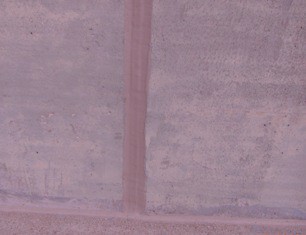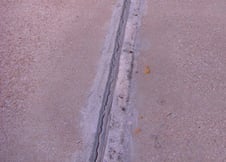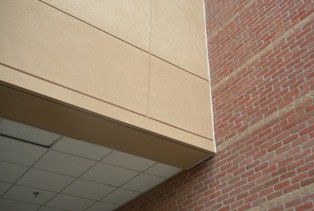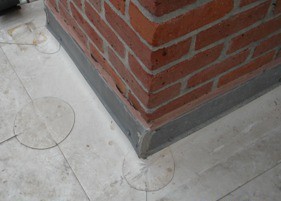Sealant Performance and Compatibility: The Great Disconnect

By: Ben T. Hixson, CCCA, CCS
President, Hixson Consultants, Inc.
Sealants are materials used to block the penetration of liquids, gases, dust or other contaminants from one area to another by creating an adhesive barrier. Many sealants function as both a barrier and an adhesive, giving strength to sealed substrates. Sealant applications can vary greatly and the sealant products available exhibit a wide range of properties, including their base chemistry and cure mechanisms, adhesive strength, elongation, resistance to liquids and environmental stresses plus preferred application method.
Urethane and silicone sealants are two widely used products in the commercial building market. While urethane sealants have their place in the construction industry, an argument could be made that the majority of building owners and property managers will choose the superior performance offered by neutral cured silicone sealants in lieu of the short-lived performance offered by urethane sealants for exterior joint openings when fully informed.

Water-based urethane sealant cures fully in a week and can be painted after it cures. In fact, painting over urethane is recommended because exposure to the sun’s UV rays causes chalking if not painted. Urethane sealants do not bond to polycarbonate plastics, but they do bond to most everything else. Urethane sealants resist abrasion well making them suitable for use on floors.

Alternatively, silicone sealants contain solvents and adhere tightly to glass, metal and tiles but not to wood. Although one should not paint over them, they don’t degrade in sunlight. Instead, they remain flexible allowing some building movement without failing. Clean-up of silicone sealants requires solvents.
Because silicone is inorganic, it is unaffected by UV radiation and resists mold and mildew. Silicone can be applied at virtually any temperature and can stand up to adverse weather conditions shortly after application. There are silicones formulated for most substrates, but most important, silicone adheres to nonporous substrates better than any other sealant, making it the best choice for surfaces such as glass, metal, ceramic tile and porcelain.
Under direct UV exposure, heat oxidation can cause deterioration of urethane sealants in less than three years. The reported satisfactory performance of exposed urethane sealants is in the range of five to eight years. Few if any owners or property managers budget for and implement replacing failed joint sealant every three to eight years. The great disconnect is the short-term mindset of creating building envelope barrier systems and sealing exposed exterior joint openings with urethane sealants versus long-term performance expectations.

Compared with urethane sealants, neutral cure silicone sealants have satisfactory performance service lives exceeding 20 years. After adequate initial testing for compatibility and documentation of successful field peel adhesion performance, sealant manufacturers offer 20-year weatherseal and adhesion warranty coverage. The coverage is to remedy defective materials and includes replacing failed sealants. The great disconnect is not including adequate specifications for sealant installers to obtain 20-year warranty coverage for exterior joint sealants.
With the extensive reliance on sealants for building envelope waterproofing and with the vastly superior service life from silicone sealants, why would the design-construction team focus on urethane? There are several performance and aesthetic reasons for past use of urethane sealants: early silicone sealants were not available in more than five colors; architects could not obtain desired colors to match cladding or to match door and window framing. Likewise, different colors weren’t available for accents. Urethane sealants bond more readily to common building materials without use of primers. Early silicone sealants had objectionable staining of adjoining porous cladding and accents, took longer to cure and collected airborne dirt. Contractors charged more to install silicone sealants, and, finally, the initial cost of urethane sealant material was one-third the cost of early neutral cure silicone sealant.

The great disconnect today is that with silicone sealant color options greatly expanded, improved adhesion, no staining of most cladding, fast cure times, competitive installation costs and price of materials approximately two times the cost of quality urethane sealants, the green building design community hasn’t rapidly gravitated to requiring neutral cure silicone sealants. When sustainability is a critical design factor, exposed exterior joint sealants should be neutral cure silicone sealants or one of the other high performance, long-term, warranty coverage polymeric joint sealants. Analyzing costs associated with replacing failed exposed exterior joint sealants, the life-cycle cost advantage clearly goes to neutral cure silicone sealants even without consequential damages.
Sealant compatibility with air barriers, moisture-resistive barriers and self-adhered modified bitumen wraps and flashings is most important to long-term adhesion. Adequate adhesion can only be obtained with sealant, building wrap and flashing compatibility. Sealant selection needs to be driven by the recommendation of the substrate component manufacturer. Incompatibility issues arise when a single joint sealant is installed at all joint openings and in conjunction with all types of air barriers, moisture barriers and self-adhered modified bitumen wraps and flashings. Urethane sealants are more compatible with barriers, wraps and flashings than neutral cure silicone sealants.

Too many times we find either no sealant or incompatible sealant installed. Consequences with no sealant and an incompatible sealant are similar when it comes to water intrusion. Also, the silicone sealant solvents may be denaturing the plastic and petroleum based barriers, wraps and flashings. That deterioration may make the likelihood for objectionable moisture entry an even greater possibility. The design-build team should consider obtaining written approval for sealant use when a specific sealant is not on the barrier, wrap and flashing manufacturers’ recommended sealant list. And, monitoring the sealant installation for the intended quality is necessary regardless of the sealant selection.
Mr. Hixson formed the applied technical resource consulting company, Hixson Consultants, Inc., to provide expert roofing, architectural sheet metal, glazing, wall system and waterproofing consulting services for the total building envelope. He has over 37 years of experience in roof, wall and waterproofing condition analysis, life-cycle cost analysis, budgeting, design specifications and CAD detailing management, component selection and systems designed to remedy the many causes for problems including mold. Investigative surveys and new and existing facility projects have included below-grade waterproofing, plazas, masonry, precast, tilt wall, split-face brick and block, metal wall panels, terra cotta, stucco, DEFS, EIFS, balconies, terraces, parking decks, pools, fountains and both flat and sloped roofing installations. He has considerable experience in architectural sheet metal, metal panel and single-ply roofing, roof coating systems and both cold process and peel-and-stick fully adhered modified bitumen roofing. Mr. Hixson received a B.A. in Chemistry from Vanderbilt University in 1973 and is uniquely able to correlate product chemistry to predictable field performance. An active member of Roof Consultants Institute, he has earned all four of the Construction Specification Institute professional designations recognizing many years of construction experience and successful passage of technical proficiency exams. He can be reached at 205-663-2220 or bhixson@bedocs.com.
Subscribe Today!
Stay-in-the-know and subscribe to our blog today!